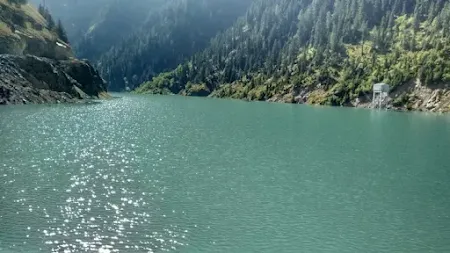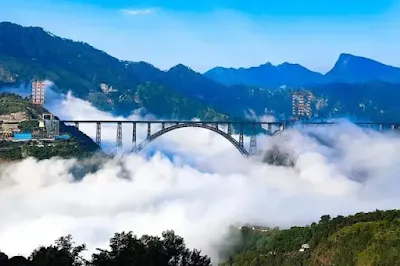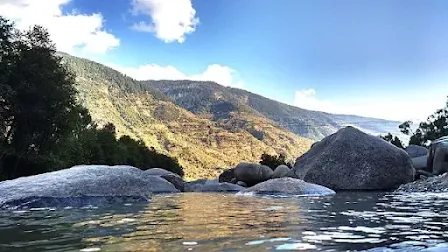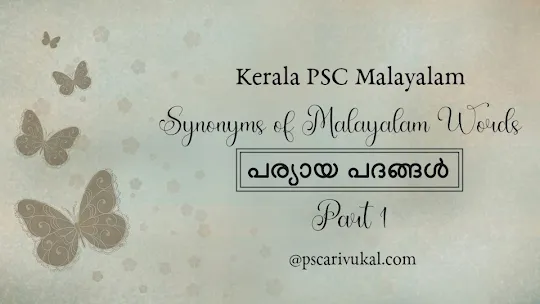The Indus River gave rise to one of the most ancient human civilizations, the Indus Valley Civilization, and it is considered as one of the four cradles of human civilizations and has immense historical significance.
Out of the 3180 km, only 709 kilometers of the overall length of the Indus run within India, while the remainder flows through China and Pakistan.
The Indus River Basin is roughly 450,000 square miles in size. It is one of the world's major drainage basins.
It starts on the high plateaus of Tibet, flows across Kashmir's southwest border, and flows roughly 200 miles north-westward to a flood delta near the Arabian Sea.
The Indus River System consists of the Indus River and its tributaries, which include the Ravi, Beas, Sutlej, Jhelum, and Chenab.
The "Indus" river is mentioned several times in Rigveda as "Sindhu," which means 'large body of water, sea, or ocean.'
The following section contains all of the potential questions and answers concerning the river Indus that might be asked in the various Kerala PSC prelims and mains examinations.
Indus River System
Basic Facts About the Indus River
- Length – 3180 km.
- 2880 Km (for Kerala PSC).
- Origin – Bokharchu Glacier, Kailash Mansarovar Range near Mansarovar Lake, Tibetan Plateau, China.
- Flows through –
- Countries – India (5%), China (2%) & Pakistan (93%).
- Union Territory – Leh (Ladakh).
- Merges into – Arabian Sea, Rann of Kutch, Pakistan.
- Only west-flowing Himalayan river – Indus.
- Also known as the Sindhu River.
- Rigvedic rivers which are collectively known as 'Saptasindhu' – Saraswati, Beas, Ravi, Sutlej, Jhelum, Chenab & Indus.
- The longest river in the Indian subcontinent – Indus.
- The westernmost river system in the Indian subcontinent – Indus.
- The Indian river which forms deep gorges – Indus.
- The largest and longest river in Pakistan – Indus.
- Lifeline of Pakistan – Indus.
- National River of Pakistan – Indus.
- Epithets – Lifeline of Pakistan, Singi Khamban (in Tibet), Meghna, Abbasin (Father of all rivers), Shendu (in China).
- Only Himalayan river that flows into the Arabian Sea – Indus.
- Cotton was believed to be cultivated for the first time in the basin of – Indus.
- Indus River enters India through – Shipki La Pass & Ladakh.
- The river which joins the Indus river before it enters Pakistan – Shyok.
- Nubra river drains into Shyok river at – Diskit village in Nubra.
- Nubra river originates from – Siachen glacier.
- The longest glacier in the Karakoram range – Siachen Glacier.
- Indus River enters Pakistan at the – Chillar (Dardistan region, Kashmir).
- near the Nanga Parbat.
- Major Cities on the banks of the Indus river – Leh (India), Sukkur & Hyderabad (Pakistan).
- The only Indian city that is situated on the banks of river Indus – Leh (India).
- Major Tributaries of Indus – 5.
- Sutlej,
- Jhelum,
- Ravi,
- Beas,
- Chenab.
- The five major left-bank tributaries of the Indus River are known as – Panjnad (rivers of Punjab).
- All 5 major tributaries of the Indus River join at – Mithankot (Pakistan).
- Tributaries of Indus –
- Left Tributaries of Indus – Jhelum, Ravi, Beas, Chenab, Sutlej & Zaskar.
- Right Tributaries of Indus – Gilgit, Shyok, Gomal, Kabul river.
- Largest Tributary of the Indus River – Chenab.
- Longest Tributary of Indus in India – Sutlej.
- Smallest Tributary of Indus river – Beas.
- Southernmost Tributary of Indus river– Sutlej.
- The only tributary of the Indus that originates from Tibet – Sutlej.
- The only tributary of the Indus that flows fully through India – Beas.
- The tributary of the Indus river that originates from Kasmir – Jhelum.
- The tributaries of the Indus river that originate from Himachal Pradesh – Ravi, Beas, and Chenab.
- 4 major tributaries of the Indus originate from India – Jhelum, Ravi, Beas, and Chenab.
- Other minor Tributaries of Indus – Dras, Balram, Suru, Gilgit, Hunza, Nubra, Swat Shyok, Zaskar, and Kabul river (also known as Kumbha in Rigveda).
- The tributaries which join the Indus river in Kashmir are – Nubra, Shyok, Zaskar (Ladakh), Astor (Nanga Parbat) & Hunza.
- Archaeological sites – Mohenjo-Daro (Sindh, Pakistan).
- Dams – Tarbela Dam (Pakistan), the largest earth-filled dam in the world.
- Pass that has been created by the Indus river – Banihal Pass (Jammu & Kashmir).
Major Tributaries of the Indus River
1. Jhelum
- Length – 725 km.
- Origin – Verinag Spring, Anantnag district, Kashmir.
- Ancient Names – Vitasta (Rigveda), Hydaspes (Greek).
- The Jhelum River is believed to be the Hydaspes mentioned by Arrian (the historian of Alexander the Great) and the Bidaspes mentioned by the Egyptian geographer Ptolemy.
- Tributaries – Kishanganga, Sandrin, Arapal, Sindh, Arapath, Bringi, Rambiara, Sukhnag, Liddar.
- The largest tributary of Jhelum – Neelum River/Kishanganga River.
- Srinagar is situated on the banks of – Jhelum.
- The westernmost and largest of the five rivers of Punjab – Jhelum.
- The tributary of River Indus which flows through the Wular Lake – Jhelum.
- The largest freshwater lake in India is – Wular Lake (Jammu & Kashmir).
- The only major Himalayan river that flows through Kashmir valley – Jhelum.
- On the banks of which river did the battle between Alexander and Porus occur – Jhelum.
- The river where the Kishanganga hydroelectric project is situated – Jhelum.
- Uri Dam of Jammu & Kashmir is located on the river – Jhelum.
- Uri hydroelectric project is located on the – Jhelum river.
- The confluence of the Jhelum River and the Chenab happens at – Trimmu (Jhang District, Punjab).
- Major Dams & Barrages – Mangla Dam, Tulbul Project, Rasul Barrage, Trimmu Barrage.
- Length – 725 km.
- Origin – Verinag Spring, Anantnag district, Kashmir.
- Ancient Names – Vitasta (Rigveda), Hydaspes (Greek).
- The Jhelum River is believed to be the Hydaspes mentioned by Arrian (the historian of Alexander the Great) and the Bidaspes mentioned by the Egyptian geographer Ptolemy.
- Tributaries – Kishanganga, Sandrin, Arapal, Sindh, Arapath, Bringi, Rambiara, Sukhnag, Liddar.
- The largest tributary of Jhelum – Neelum River/Kishanganga River.
- Srinagar is situated on the banks of – Jhelum.
- The westernmost and largest of the five rivers of Punjab – Jhelum.
- The tributary of River Indus which flows through the Wular Lake – Jhelum.
- The largest freshwater lake in India is – Wular Lake (Jammu & Kashmir).
- The only major Himalayan river that flows through Kashmir valley – Jhelum.
- On the banks of which river did the battle between Alexander and Porus occur – Jhelum.
- The river where the Kishanganga hydroelectric project is situated – Jhelum.
- Uri Dam of Jammu & Kashmir is located on the river – Jhelum.
- Uri hydroelectric project is located on the – Jhelum river.
- The confluence of the Jhelum River and the Chenab happens at – Trimmu (Jhang District, Punjab).
- Major Dams & Barrages – Mangla Dam, Tulbul Project, Rasul Barrage, Trimmu Barrage.
2. Chenab
- Length – 1180 km.
- Origin – Bara Lacha Pass, Himachal Pradesh.
- The largest tributary of the Indus river – Chenab.
- Ancient Names – Aksini (Rigveda), Iskmathi, Acensines (Greek), Chandrabhagh (Mahabharata), Krishana (Atharva Veda).
- It is formed by two streams, the Chandra and the Bhaga, at Tandi near Keylong in Himachal Pradesh.
- Major Tributaries – Tawi, Thirot, Sohal, Bhut nallah, Liddrari & Marusudar.
- The biggest tributary of the Chenab – Marusudar.
- The Chenab river empties into – Sutlej.
- After the confluence of Chenab and Sutlej, it becomes – Panjnad river.
- The city of Jammu is situated on the banks of – Tawi River.
- also known as Surya Putri in ancient times.
- A major left bank tributary of Chenab.
- A river that bisects Jammu – Tawi River.
- The river which plays a crucial role in the epic love stories of Heer-Ranjha & Sohni-Mahiwal tales – Chenab.
- The world's highest rail bridge is – Chenab Bridge (Jammu & Kashmir).
- 1,315 meters long and 359 meters above the river bed.
- Part of the Udhampur-Srinagar-Baramulla rail link project (USBRL).
- The 900-MW Baglihar Hydroelectric Power Project of Jammu & Kashmir is on – Chenab.
- Major Dams & Barrages – Salal Dam, Pakal Dul Dam, Kiru Hydroelectric Project, Dul Hasti Hydroelectric Plant, Ratle Hydroelectric Plant.
3. Ravi
- Length – 720 km.
- Origin – Near Rohtang Pass, Himachal Pradesh.
- Ancient Names – Parushni (Rigveda), Airavati, Hydraotes (Greek)
- Epithet – River of Lahore.
- The Lahore city of Pakistan is situated on the banks of – Ravi.
- Name the major tributary of Indus that originates in the Chamba district of Himachal Pradesh – Ravi.
- The location at which, the tricolor of freedom was hoisted by Jawaharlal Nehru after the Lahore Congress session of 1929 – on the banks of River Ravi (Lahore).
- on the midnight of December 31, 1929.
- The congress session that passed the Purna Swaraj resolution – Lahore session of 1929.
- Major Tributaries – Budhil, Nai or Dhona, Seul, Ujh.
- The biggest tributary of the Ravi river is – Ujh River.
- Major Dams – Thein Dam or Ranjit Sagar Dam, Shahpurkandi Dam Project.
- River Ravi confluences with Chenab at – Bahawalpur (Pakistan).
- The Battle of the Ten Kings (Dasarajana Yuddha) mentioned in the Rigveda was fought on the banks of – Ravi.
- The tombs of Mughal Emperor Jahangir and his wife Noor Jahan are located on the banks of – River Ravi.
- Archaeological site situated on the banks of River Ravi – Harappa.
4. Beas
- Length – 470 km.
- Origin – Beas Kund Near Rohtang Pass on the southern end of the Pir Panjal Range of Himachal Pradesh.
- The smallest tributary of the Indus river – Beas.
- The only tributary of the river Indus, which flows fully in India (originates and falls in India) – Beas.
- The only tributary of the Indus that doesn't flow towards Pakistan – Beas.
- Ancient Names – Vipasa (Rigveda), Arjiki / Arjikiya (Vedas), Hyphasis (Greek).
- Major Tributaries – Bain, Banganga, Luni and Uhal.
- Major Dams – Pong dam, Pandoh Dam.
- The river that is responsible for the formation of Kullu Valley – Beas.
- Kullu, Manali, and Kangra Valleys are located in the – Middle Himalayas/ Lesser Himalayas in Himachal.
- Valley of Gods – Kulu Valley.
- Home of Indus Dolphins.
- The river Beas after flowing through Himachal Pradesh and Punjab joins which river? River Sutlej.
- The river Beas joins Sutlej at – Harike (Punjab).
- Kullu, Manali, and Kangra Valleys are located in the – Middle Himalayas/ Lesser Himalayas in Himachal.
- Valley of Gods – Kulu Valley.
5. Sutlej
- Length – 1450 km.
- Origin – Lake Rakshastal (Rakas Lake) near Lake Manasarovar and Mount Kailash, in Western Tibet
- Epithets – Red River,
- Ancient Names – Hesidros / Zaradros (Ancient Greek), Shutudri or Shatadru (Sanskrit, Rigveda)
- Southernmost Tributary of Indus river – Sutlej.
- Easternmost tributary of the Indus River– Sutlej.
- Longest Tributary of Indus in India – Sutlej.
- Only tributary of the Indus which originates from Tibet – Sutlej.
- The longest river in Punjab – Sutlej.
- Sutlej enters India through the – Shipki la pass.
- Kinnaur district in the state of Himachal Pradesh, India, and Tibet.
- Sutlej passes through the states of – Himachal Pradesh & Punjab.
- Sutlej meets Indus at – Mithankot in Pakistan.
- Major Tributaries – Baspa River, Spiti River, the Nogli Khad, Chitti Bein, and Soan River.
- Major Cities – Ludhiana, Ferozepur.
- Major Dams – Bhakra Nangal Dam, Nathpa-Jhakri Dam
- The largest dam in India – Bhakra Nangal Dam.
- The reservoir built by Bhakra Dam – Guru Gobind Sagar Lake.
- Indira Gandhi Canal begins at – Harike Barrage, at the confluence of River Beas & Sutlej.
- originally known as the Rajasthan Canal.
- renamed as the Indira Gandhi Canal on November 2,1984.
- The longest Canal in India is – Indira Gandhi Canal (650 km).
- Provides irrigation facilities mainly for – Rajasthan, Punjab & Haryana.
- Name the canal system connecting the Sutlej with the Yamuna River – Sutlej Yamuna Link Canal (SYL).
- Archaeological sites – Ropar.
- The first Indus valley excavation site in independent India.
| River | Source | Length (KM) | Falls into |
|---|---|---|---|
| Indus | Near Mansarover lake | 2880 | Arabian Sea |
| Jhelum | Verinag | 725 | Chenab |
| Chenab | Bara Lacha pass | 1180 | Sutlej |
| Ravi | Near Rohtang Pass | 720 | Chenab |
| Beas | Near Rohtang Pass | 470 | Sutlej |
| Sutlej | Mansarover-Rakas Lake | 1450 | Indus |
Indus Water Treaty
- Date – Sept. 19, 1960 (Karachi).
- Signed Between – India & Pakistan.
- Indian Prime Minister (Jawaharlal Nehru) & Pakistan President (Ayoob Khan).
- Brokered by – World Bank.
- India can use 20% of water (33 MAF (million acre-feet)) from the Indus river.
- which means 80% (135 MAF) of the share of the water went to Pakistan.
- Name the three western rivers allocated to Pakistan – Indus, Chenab & Jhelum.
- Name the three eastern rivers on which India has complete control – Ravi, Beas & Sutlej.
Permanent Indus Commission
- The bilateral commission of officials from India and Pakistan to manage the Indus Water Treaty.
- Under the Indus Water Treaty of 1960, it is mandatory to hold a meeting at least once every year ending March 31.
- The functions of the Commission are:
- to study and report to the two Governments on any problem relating to the development of the waters of the rivers.
- to solve disputes arising over water sharing.
- to arrange technical visits to project sites and critical river head works.
- to undertake, once every five years, a general tour of inspection of the Rivers for ascertaining the facts.
- to take necessary steps for the implementation of the provisions of the treaty.
📝SideNotes:
- In terms of Waterbodies –
- Tributary – a freshwater river or stream flowing into a larger river or lake or other body of water.
- Longest Tributary – A tributary whose length is maximum.
- Largest Tributary – A tributary that discharges the maximum amount of water
- eg: Amazon – The largest river in the world while the Nile is the longest river in the world.
- Indian Subcontinent – the geographic region of Southern Asia which consists of at least 7 countries namely, India, Pakistan, Nepal, Bhutan, Bangladesh, Sri Lanka, and the Maldives.
- Mohenjodaro was discovered by – R. D. Banerji (1922).
- Means 'Mount of Dead' in the Sindhi language.
- The largest site of the Indus Valley Civilization.
- UNESCO World Heritage Site in 1980.
- Harappa was discovered by – Rai Bahadur Daya Ram Sahni (1921).
- Dholavira was discovered by – J. P. Joshi (1967-68).
- The largest river in India – Brahmaputra.
- The longest river in India – Ganga.
- The longest river in peninsular India – Godavari.
- Capitals of Ladakh – Leh (for PSC).
- Summer capital – Leh.
- Winter capital – Kargil.
- Punjab in the Persian language means 'Land of Five Rivers.'
- Bhakra Dam – Himachal Pradesh, Nangal Dam – Punjab.
- During which Five-year plan was the Bhakra Nangal dam built? First Five Year Plan (1951-56).
- Completed and inaugurated during the second five-year plan (1956-61).
- The state that conducted the first Indus river dolphin census in the year 2018 along with WWF? Punjab.
- Bara Lacha pass connects – Lahaul district in Himachal Pradesh to Leh (Ladakh).
- Kumaun Himalayas – west-central section of the Himalayas in northern India, extending 200 miles from the Sutlej River east to the Kali River. It is bounded on the north by Tibet, on the east by Nepal, on the south by the state of Uttar Pradesh, and on the west by the Garhwal region.
- The tallest dam in India – Tehri dam.
- The Longest dam in India – Hirakud dam.
- Who proclaimed the dams as the 'temples of modern India/ New Temple of Resurgent India'? Jawaharlal Nehru.
- at the start of the construction of the Bhakra Nangal Dam.
- Who is known as the 'Father of the Bhakra Nangal Dam'? Sir Chaudhari Chhotu Ram.















Post a Comment
Post a Comment